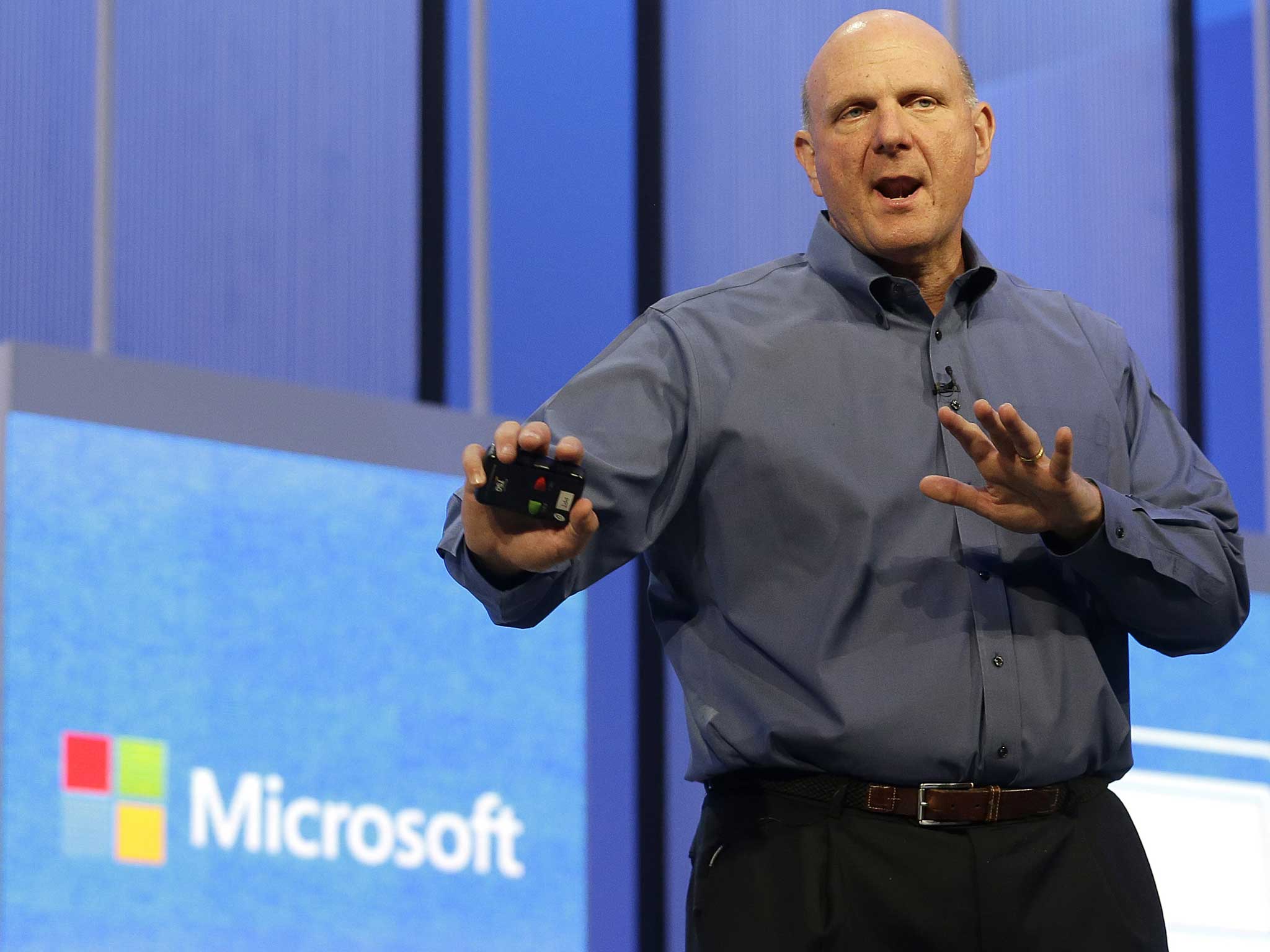After months of criticism of Windows 8, Microsoft unveils Windows 8.1 in bid to improve operating system
CEO Steve Ballmer tells software engineer the tech giants have finally reintroduced the 'Start' button

Your support helps us to tell the story
From reproductive rights to climate change to Big Tech, The Independent is on the ground when the story is developing. Whether it's investigating the financials of Elon Musk's pro-Trump PAC or producing our latest documentary, 'The A Word', which shines a light on the American women fighting for reproductive rights, we know how important it is to parse out the facts from the messaging.
At such a critical moment in US history, we need reporters on the ground. Your donation allows us to keep sending journalists to speak to both sides of the story.
The Independent is trusted by Americans across the entire political spectrum. And unlike many other quality news outlets, we choose not to lock Americans out of our reporting and analysis with paywalls. We believe quality journalism should be available to everyone, paid for by those who can afford it.
Your support makes all the difference.Microsoft has released a preview version of its re-designed flagship operating system in an attempt to reverse slumping sales and silence the chorus of criticism that met the original Windows 8.
At a conference is San Francisco yesterday, the tech giant showed off its redesign – tentatively titled Windows 8.1 – that includes a series of sweeping alterations designed to address widespread consumer dissatisfaction.
CEO Steve Ballmer admitted that the supposedly revolutionary tile-design of the old system will be reeled back as programmers make it easier to reach the traditional and much-loved ‘Desktop’ interface.
“Let's make it easier to start applications the way we're used to,” Ballmer told the audience of software developers. "What we will show you today is a refined blend of our Desktop experience and our Modern experience."
When it was released in October last year, Windows 8 was intended to reinvigorate sales of personal computers with its supposed compromise between tablet touch-screen use and typical Microsoft feel.
Analysts now believe users' frustration with it is to blame for the biggest drop in personal computer sales in nearly two decades; research firm IDC reportedly said the operating system actually slowed down the market.
Meanwhile, Windows tablets had less than a 4 per cent market share in this year’s first quarter, compared with 57 per cent for Android and 40 per cent for Apple's iPad.
David Pierce, senior reviews editor of The Verge, told the BBC: “Windows XP is not really being supported anymore and people have to upgrade and I think they’re hopefully giving us a way to do it in just small enough steps.
“There are a lot of things about Windows 8 that are really great but I think it’s going to continue to take a while to catch on.”
As well as a return to the old Start button, 8.1 will also include more options to use multiple apps at once. People will now be able show up to four different programs on the screen at any one time, rather than just two.
The update will also offer more integrated search results, showing users previews of websites, apps and documents that are on the device, all at once.
Frank Gillett, an analyst with research firm Forrester, said that with 8.1, Microsoft is doing a better job of uniting the Desktop and Modern screens, but the changes don't run deep.
"They smoothed off some rough edges, but they don't fundamentally change the experience of having two experiences within one operating system," he said.
Join our commenting forum
Join thought-provoking conversations, follow other Independent readers and see their replies
Comments